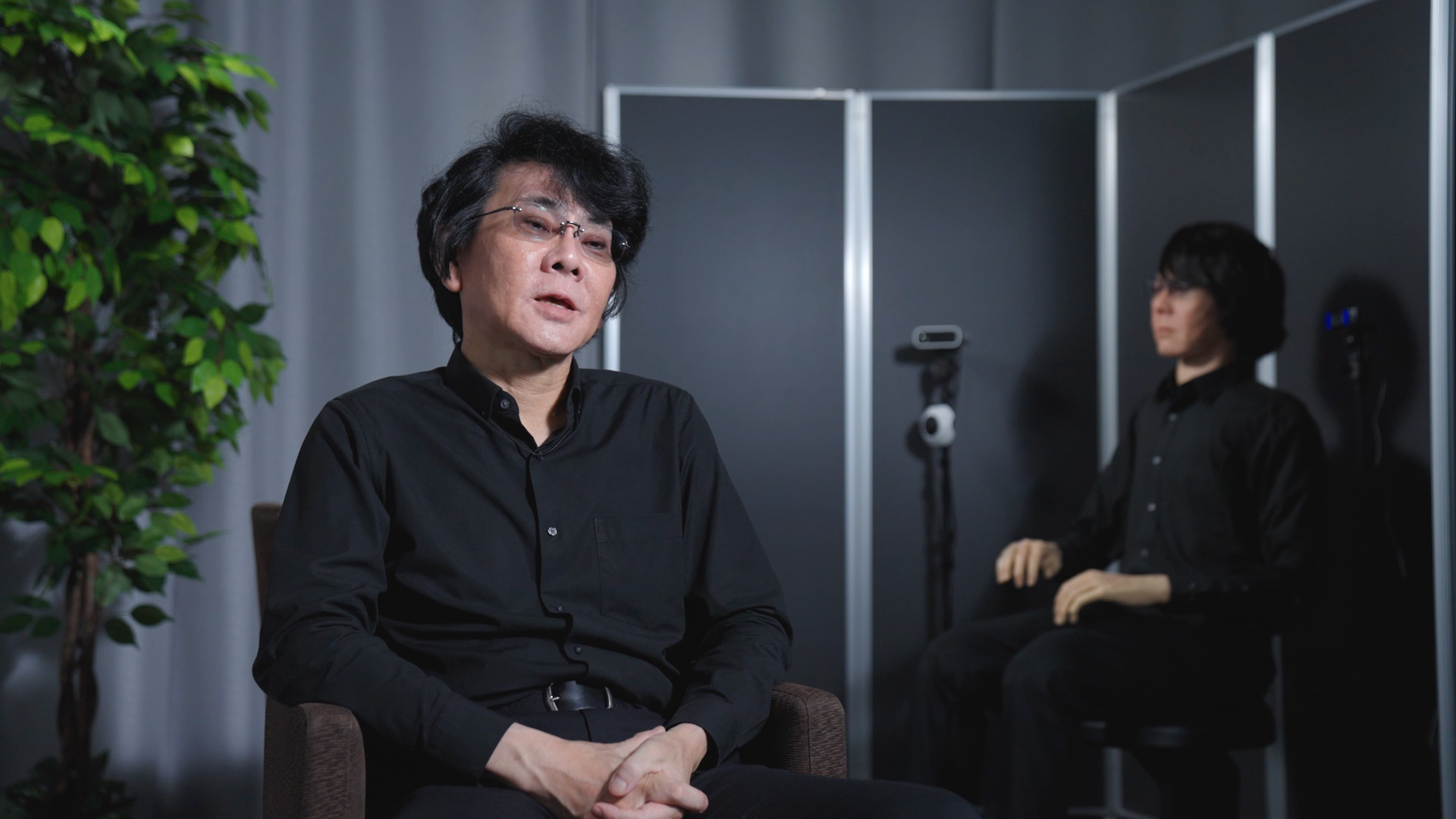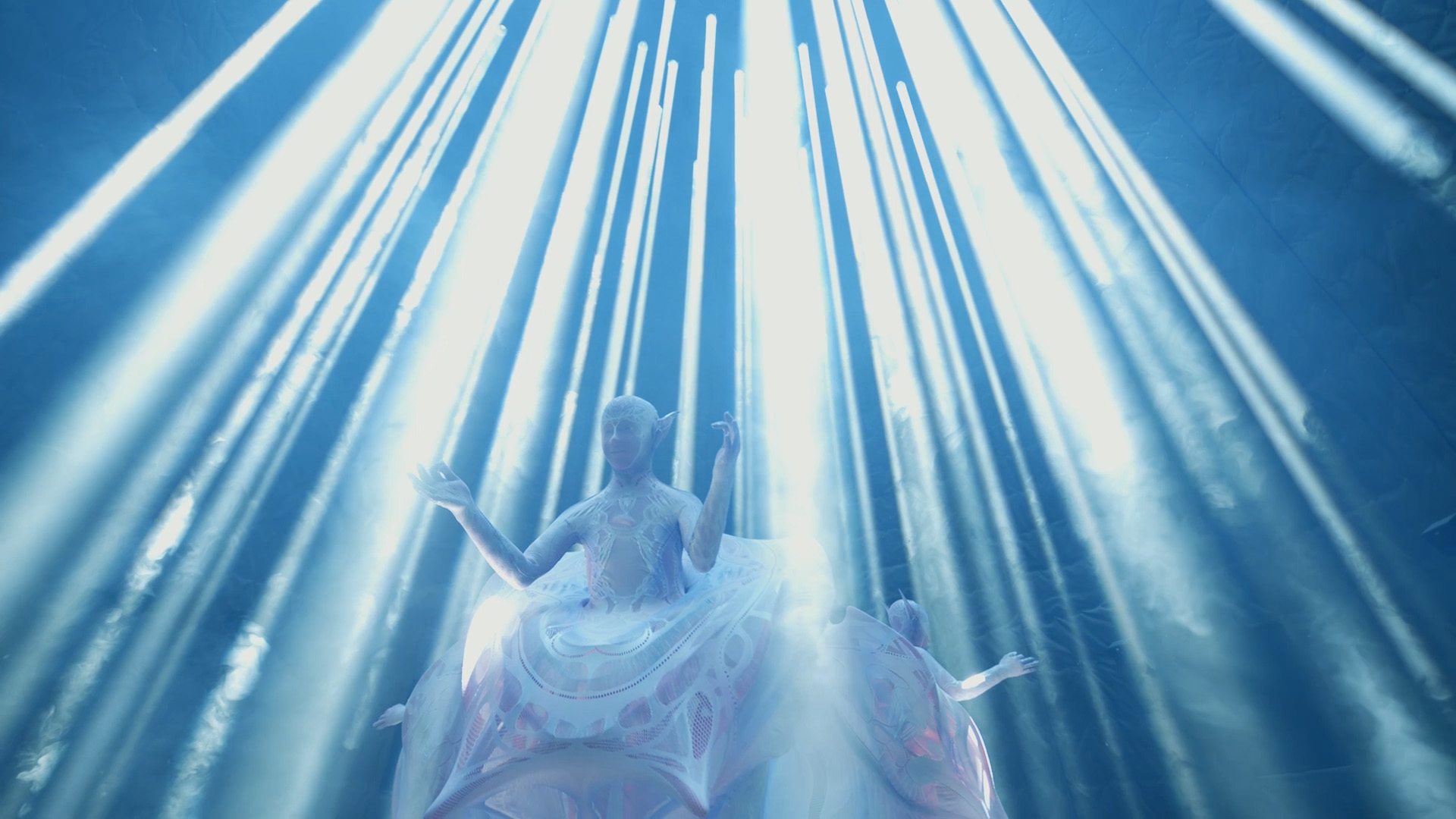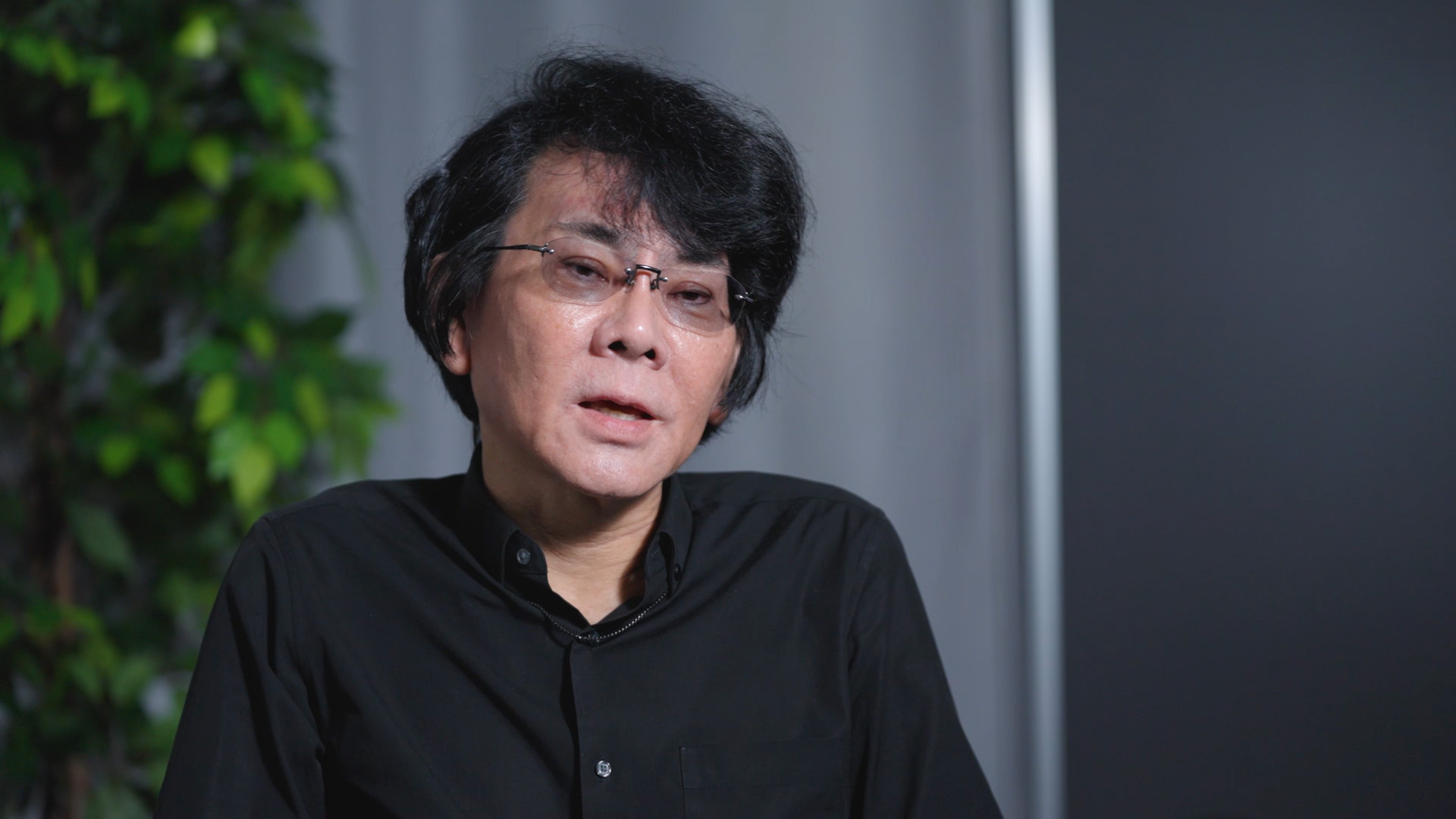“Future of Life” Creator’s Voice Vol. 10, Spotlight on ISHIGURO Hiroshi Producer
Professor at The University of Osaka and Visiting Director at ATR ISHIGURO Hiroshi Laboratories
ISHIGURO Hiroshi
Current job responsibilities
I conduct the research and development of robots and avatars that interact with people at the University of Osaka and ATR ISHIGURO Hiroshi Laboratories. I am also involved in the business of avatars at a startup called AVITA Inc. in Tokyo.
What was asked of creators for this project
We asked creators to help create the future that we envision, and my ideas, in various ways. secca inc., KURIBAYASHI Kazuaki, MATSUI Tatsuya, HIROKAWA Tamae, KIKUCHI Akane, KANEKO Shigetaka, SEGAWA Masao, ENDO Jiro, UCHIDA Maholo, KOBAYASHI Daisuke, and many other creators fully utilized their respective strengths to support this project.
The perspective used to select creators
The creator team was put together not only by me, but also by consulting with Planning Director UCHIDA Maholo and Production Director KOBAYASHI Daisuke, and gathering recommendations for numerous people. We selected individuals who we believed would be able to use their unique abilities unreservedly to help flesh out the scenes we envisioned.
What was important in terms of directing the creative thrust
What I insisted on was not changing the direction of what we wanted to create. The ideas I wanted to impart in the beginning were almost exactly the same all the way through. Rather than giving detailed instructions, I brought up fundamental themes, asking questions about what the future might look like, what kind of future we would want to create, what the relationship between humans and robots should be, and what we want visitors to think about. Then I had the team discuss these ideas and incorporate the results into a realistic exhibition.
In Zone 2, “50 Years in the Future,” the content was created by our creators under the guiding principle that the future will be richer in nature and culture. Additionally, for the final Zone 3, “Life 1000 Years in the Future: Mahoroba,” I communicated the vision that humans will be able to freely choose their bodies, yet also become beings capable of deeper emotional connection, and asked them to give form to this concept. I feel that not micromanaging the details ultimately worked out for the best.
As a robot expert, I took responsibility for robot design and operation, but I worked with the creators to consider how to use the robots and what kind of core to give them.
I feel that this resulted in achieving a wonderful Pavilion.
Memorable impressions from associating with creators during the production phase
Many things left an impression on me, but what we discussed most was what the form of the exhibition in Zone 2, “50 Years in the Future,” should be. We repeatedly deliberated as a team on issues such as how to develop the scenes and the placement of projectors and robots. As a result of this process, there was significant deviation from the initial concepts, but I believe it turned out truly wonderful. Additionally, in Zone 3, “Life 1000 Years in the Future: Mahoroba,” we engaged in extremely deep discussions about things like how to apply skin to this new kind of android with its dynamic movements, what kind of costume to place on top of that skin, how to position the android, and how to direct the movements and lighting. I feel that in these processes, the unique perspectives of each artist and creator blended seamlessly, allowing us to create an impressively memorable scene. It’s difficult to single out specific episodes due to the sheer volume of exchanges and discussions we had, but the overall collaborative process itself remains a powerful memory.
Thoughts on what the creators produced
I’m a researcher, so I tend to believe I can create things generally as I have imagined them. But this project resulted in a scale of amazing output that far exceeded my imagination, and I must admit I’m genuinely surprised. Particularly for Zone 2, “50 Years in the Future,” I never anticipated it would become the kind of exhibition it turned out to be, or that it would tell such a moving story. Similarly, for Zone 3, “Life 1000 Years in the Future: Mahoroba,” I never imagined it would produce such a mysterious and captivating android. This was something a single person could absolutely not have achieved alone, and I believe the many creators involved share this sentiment. If, for example, ten creators work together, you’d usually expect the output of ten different aspects of the overall product. But in this project, I feel the results were many times greater than that. And that is a direct result of our collaborative style, which involved continuous discussion so we could create the Pavilion together.
New discoveries gained through collaboration with the creators
One of the major goals for researchers is to create things as imagined and achieve results. However, in working on this project with the creators, I discovered that the process of repeatedly engaging in intense discussion together can generate results that surpass our own individual capabilities. Since this project was closer to art than research, I strongly felt that art has the potential to transcend research. This was truly a significant discovery, and I’m glad I was able to work on it together with the creators.
Lessons learned from collaboration with the creators and insights to apply going forward
I have dedicated myself to various research projects and robot development in pursuit of achieving the world I envision. Moving forward, however, I hope to collaborate with more people to imagine future robots and societies that I could never conceive or create alone. Experiencing firsthand and truly realizing how much can be accomplished by pooling the efforts of many has been an immensely valuable experience for me.
Highlights not to be missed
Our Pavilion tells a cohesive story, with every scene meaningfully connected.
I invite everyone to take their time viewing it from start to finish, enjoying the narrative while contemplating the future. In the coming era, I believe that how we engage with and integrate technology, robots, and AI is a challenge each of us must consider. And I want this Pavilion to serve as a catalyst for that kind of reflection. The future is something we envision and shape ourselves. This is the most crucial theme of the Expo 2025 Osaka, Kansai, Japan, and providing that opportunity is the major mission of the “Future of Life” Pavilion. I sincerely hope visitors will spend their time here earnestly contemplating the future.